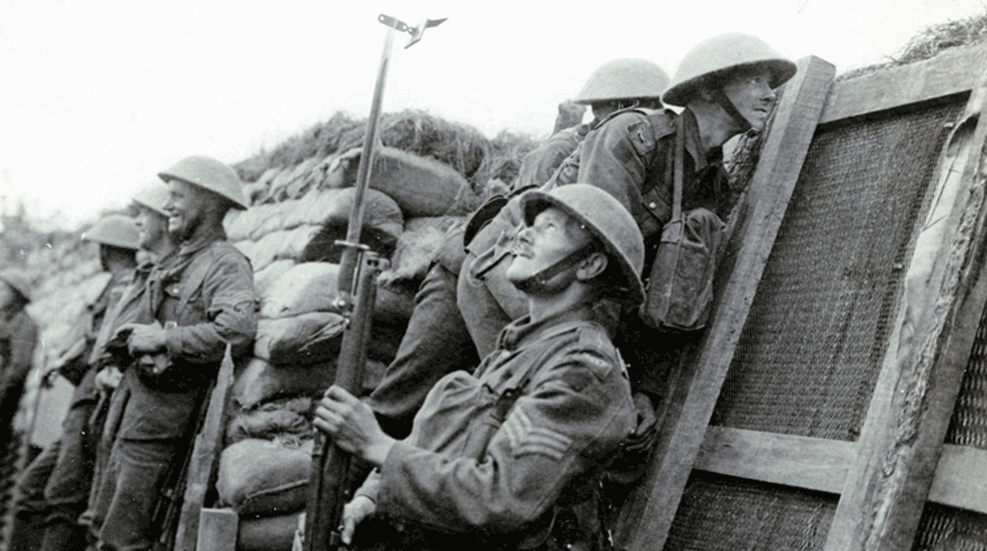
World War I saw the widespread introduction of many, what we would call “modern” arms, including the aircraft, the machine gun, the armored vehicle, the submarine and even poison gas. When you drill down a little farther, there are several highly specialized arms used in the “Great War” that were specific to the conflict.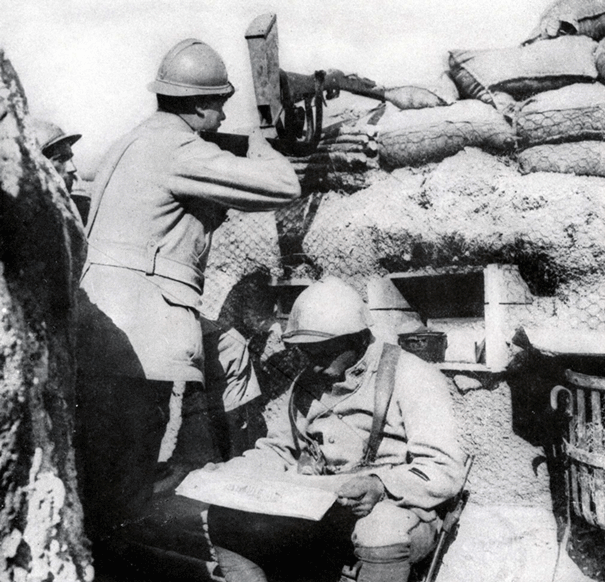
The day-to-day work of a French trench sniper. Western Front 1917.
One of these was the periscope rifle. Born in the battle of the trenches, the periscope rifle was a specialized tool for the deadly cat-and-mouse game of Great War snipers. The basic concept was to give the marksman the ability to aim and fire from the comparative safety of below ground—inside his trench position—without having to raise his head above the parapet and expose himself to enemy fire.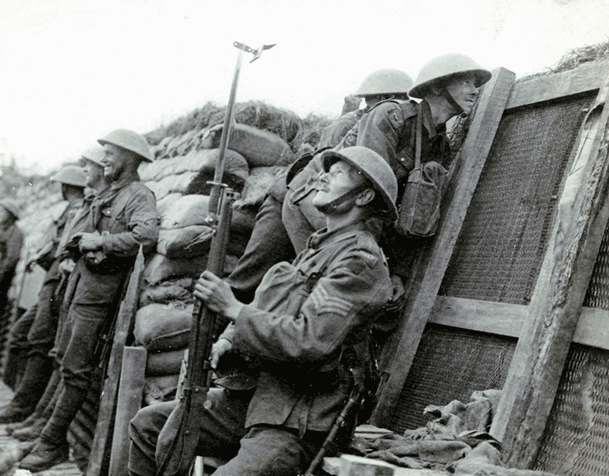
A different style of “periscope rifle” with British troops at Ypres, September 1917. The Tommy uses a small mirror mounted in a metal frame with a hinged cover, fitted over the bayonet of his Lee-Enfield for safer viewing of “No-Man’s Land.”
A standard rifle was cradled in one of many various style mounts, with a mirrored-periscope set up to provide the shooter with a reasonable approximation of a normal sight picture. A string or wire was attached to the trigger. The rest was the fine art of marksmanship.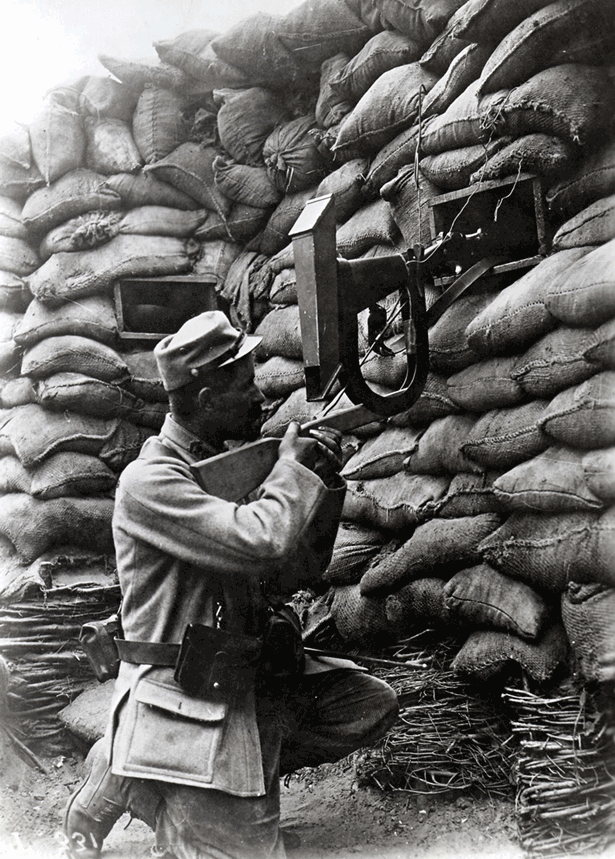
A French periscope rifle design using the Lebel rifle.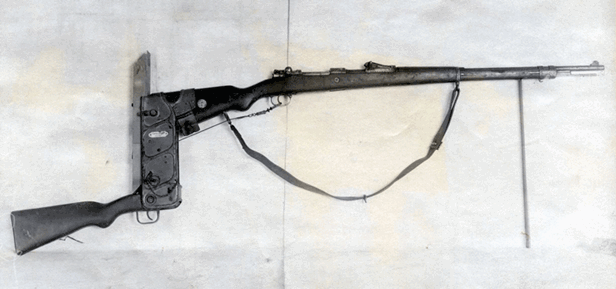
German Mauser Gewehr 98 equipped with a Leitz Trench Periscope.
“Sniping” was generally considered a dirty business, or a black art at best, on both sides and throughout most of World War I. Regardless of official sentiments, the snipers’ deadly skills were readily cultivated and refined beginning in 1915. Allied sniper manuals from the Great War are quite detailed (and much of the information in those guides is still relevant today). The development of the periscope rifle was simply in keeping with the needs of the troops engaged in trench warfare, and periscope-sighted rifles could be found in service with the British, French, Belgian, Russian and German armies.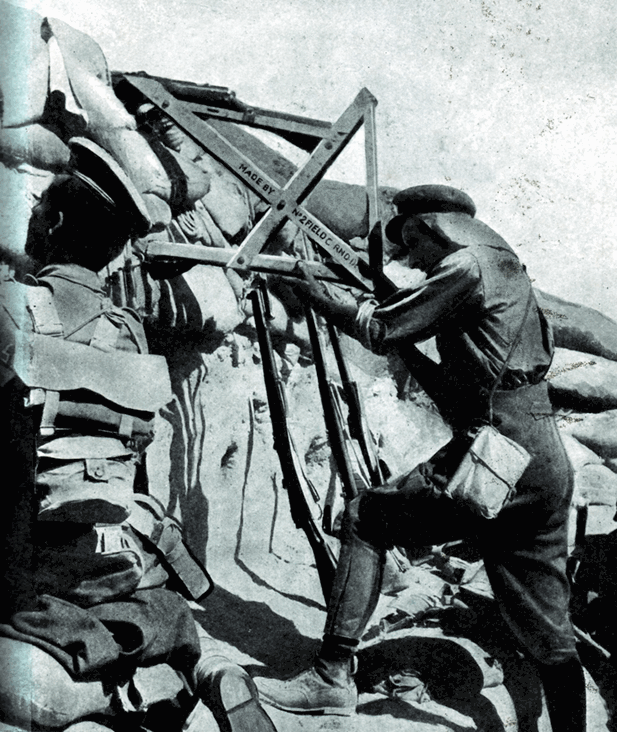
Australian troops created several periscope sighting arrangements for their Lee-Enfield rifles in field workshops during the eight months of the Gallipoli campaign in 1915.
Probably the most famous of the periscope rifles was developed during the Gallipoli campaign of 1915. Lance Corporal William Beech of the 2nd Battalion of the Australian Imperial Force, leveraged his wood-working skills to modify a Lee-Enfield into a periscope rifle. Beech had seen too many of his comrades shot in the head as they peered above the trench-top, and his bisected Lee-Enfield redesign provided the ANZACs with a useful tool to help the shooter remain safe from the Turks’ murderous return fire. Most reports estimate that the maximum range for any well-constructed periscope rifle was about 100 yards. On the Gallipoli front, opposing trenches were often just 50 yards apart, sometimes even less than that, and so the periscope snipers from “Down Under” exacted a terrible toll on the Turks. In 1921, L/Cpl. Beech received ₤100 from the British war office in appreciation for his wartime design.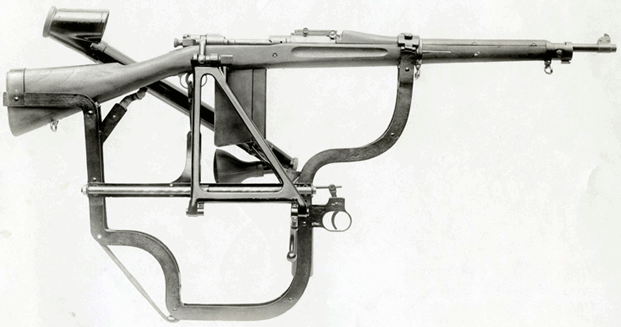
The U.S. M1903 Cameron-Yaggi Periscope Rifle, equipped with a 25-round magazine.
Americans studied the conflict with considerable interest before the country entered the war in April 1917. A couple of periscope rifle concepts were under development before the United States actually entered the war. The most advanced of these was the Cameron-Yaggi Trench Periscope Rifle. James Cameron and Lawrence Yaggi (from Cleveland, Ohio) developed a metal framework that surrounded a standard M1903 Springfield rifle. This device allowed a rifleman to raise the rifle high above his shoulder and fire safely over the top of the trench line using a “sitascope” periscope sight. Results on the target range showed the potential for accurate fire in combat. Cameron and Yaggi took their initial prototype to France to demonstrate to the Allies and solicit their opinions for improvement. Armed with these suggestions, the designers returned to the United States and produced a more refined version for demonstration to the U.S. Army.
The Cameron-Yaggi Rifle drew a fair amount of interest from the U.S. military, although it was never formally adopted, and none were issued in combat. The metal framework is odd and unattractive, but the added weight was little more than 6 lbs. Reports are that it was accurate and reasonably comfortable to shoot. Equipped with a 25-round extension magazine on the M1903 rifle, the Cameron-Yaggi offered trench snipers a considerable amount of shooting before reloading.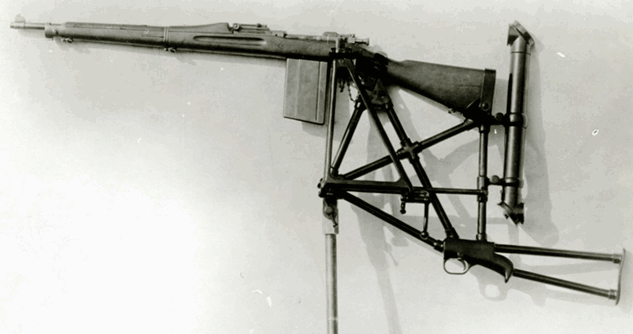
The U.S. M1903 rifle, using the Elder Periscope Rifle attachment. This also uses the 25-round trench rifle magazine. Note the cumbersome design compared to the Cameron-Yaggi.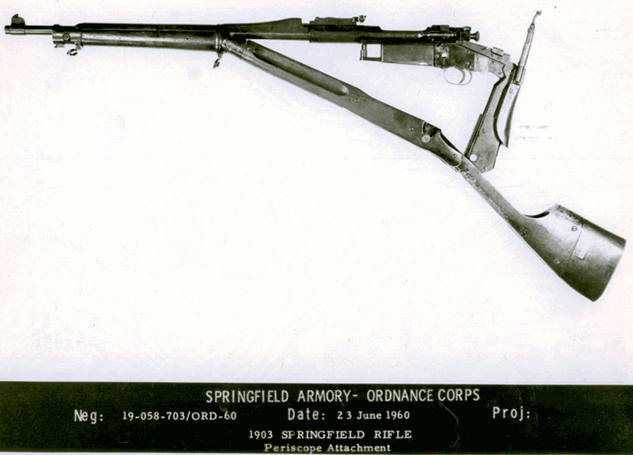
Guiberson Periscope Rifle, manufactured by Springfield Armory. This M1903 rifle was fitted with an experimental Guiberson trench mirror periscope in the collapsible, hinged stock. This rifle was tested but not approved for production. Edward C. Crossman reviewed the Guiberson Periscope Rifle in the April 7, 1917 edition of Arms And The Man, writing “The arm in its present state is entirely practical, strong, and fool-proof.”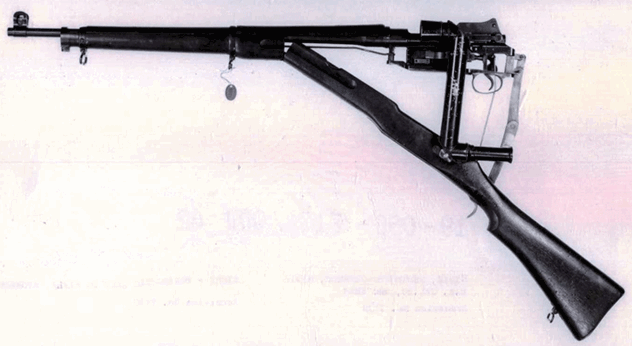
The Remington-Rioseco Periscope Rifle, equipped with the M1917 Sight–Periscopic. 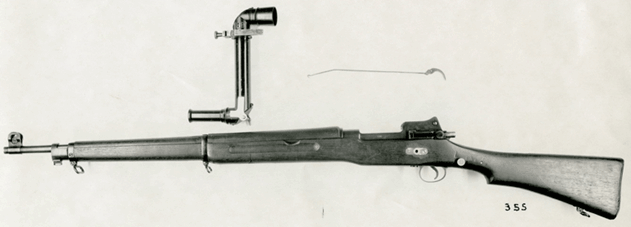
The Remington-Rioseco M1917 rifle with stock folded shut. Note the details of the periscope sight and its attachment points, as well as the firing cable and extension trigger.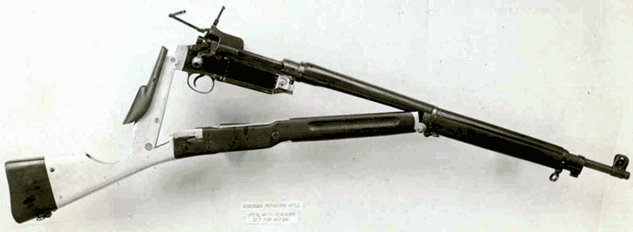
Remington-Rioseco M1917 opened for use as a periscope trench rifle. Records at Springfield Armory indicate that this rifle was made at Remington’s Ilion, N.Y., facility, and sent to Fort Benning for review, but the war ended before it could be tested.
A similar, but more cumbersome, American design was the Elder Periscope Rifle, developed by Major E.H. Elder. Several other periscope rifles (including the Guiberson and the Remington-Rioseco) were created in the United States, but much of the details of their construction—and most of the rifles themselves—are now lost to history. By the end of the Great War in November 1918, interest in specialized trench rifles was quickly fading. Within a few short years, all but a handful of these unique arms had disappeared.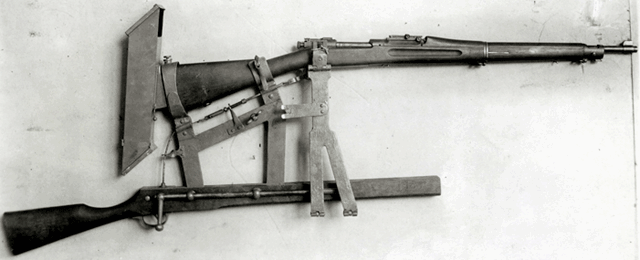
An unidentified U.S. periscope rifle design from 1918, using the M1903 rifle. Listed by U.S. Ordnance as a “sniperscope”.
The following passages come from two separate U.S. Army documents created during World War I. Both make mention of periscope-sighted trench rifles, and both refer to the specific type as a “Sniperscope.”
TRAINING IN THE USE OF THE RIFLE FOR TRENCH WARFARE
Army War College, April 1917
Sniperscope: A device for aiming with the head below the line of sight. Reports indicate that with this device the tendency is to shoot high, and that they are only reasonably accurate up to ranges of 200 yards. They are usually used over parapets, between sandbags. Proper adjustment is essential and great care is necessary to prevent derangement. 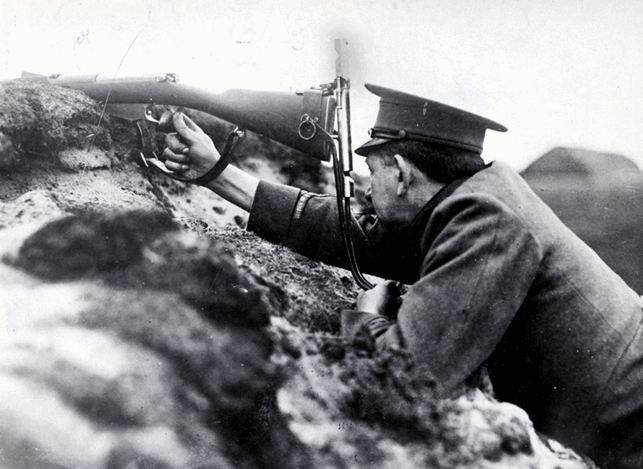
An Eradus trench periscope, fitted to the butt of a Canadian Ross rifle, photographed during testing in early 1917. Sadly, no more information has been found on this device.
EQUIPMENT SECTION, ENGINEERING DIVISION, A.E.F. 1918
The complexity of the present war, resulting in the various specialized vocations of the modern soldier, has created a need for many new items of equipment and necessitated a change in much of the old standard equipment. The Ordnance Department has conducted many tests of new inventions and devices, and investigations into the suitability of standard equipment. The following sections contain a brief synopsis of the more important items adopted and under consideration.
As the periscope is, comparatively speaking, a relatively new item of equipment, it was necessary to meet our requirements as completely as possible from French and British stocks, and owing to the scarcity of optical glass they have become more and more difficult of procurement. Everything possible is being done, however, to hasten production in the United States and increase the capacity of factories in Europe. 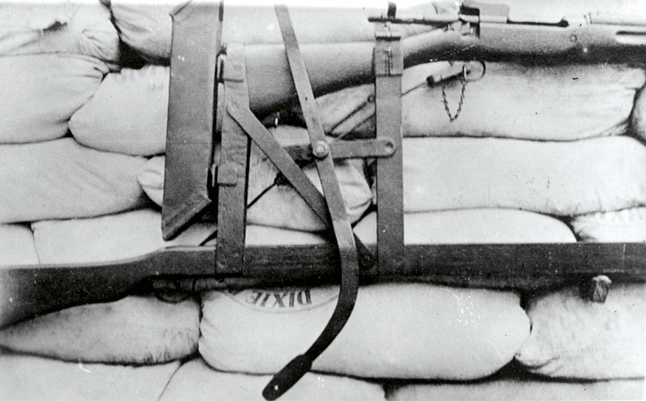
An unidentified, and rather crude-looking, periscope rifle using the U.S. M1917 rifle.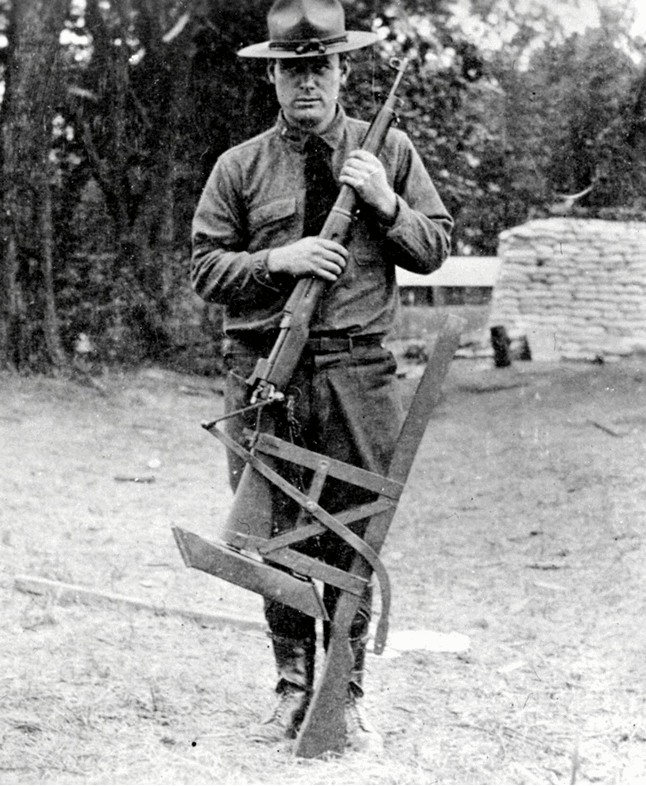
A full view of the M1917 rifle. This arrangement looks similar to French periscope rifle designs.
SNIPERSCOPES: The sniperscope is a device consisting of a dummy gun or support in which the rifle rests and a periscope sighting arrangement. The type now being furnished is also equipped with a bolt-working mechanism and the operator can aim and fire an entire clip of cartridges without exposing himself to the view of the enemy. Effort is now being made to design a sniperscope that will function with either the 1903 or the 1917 rifle.





































